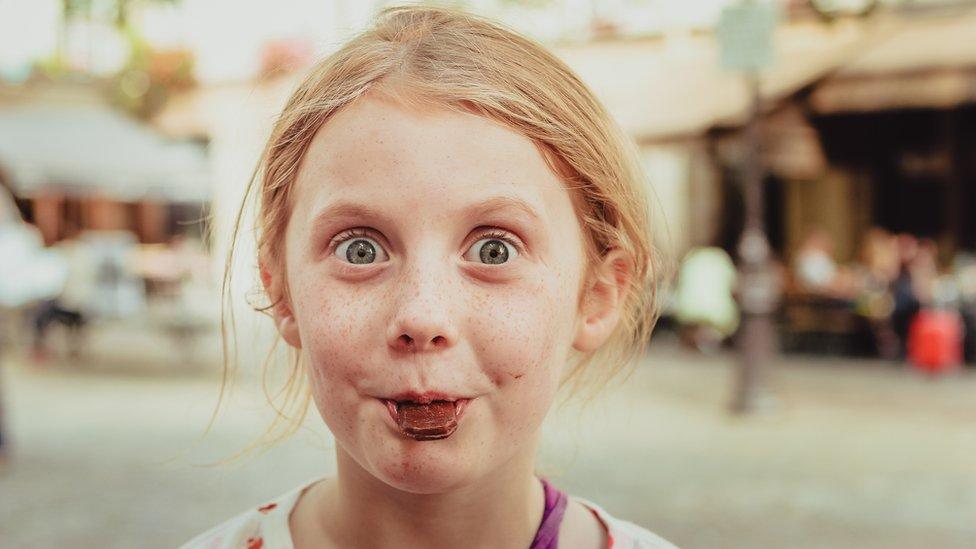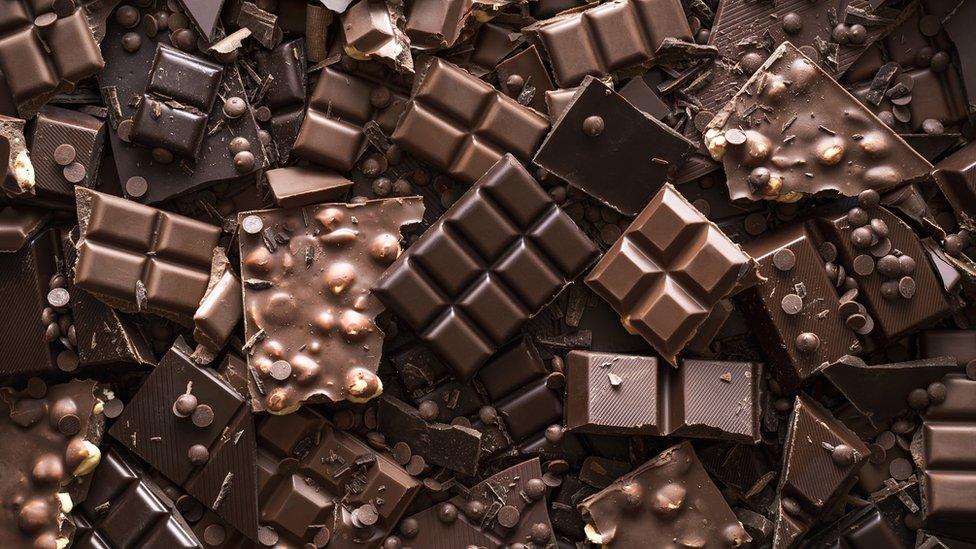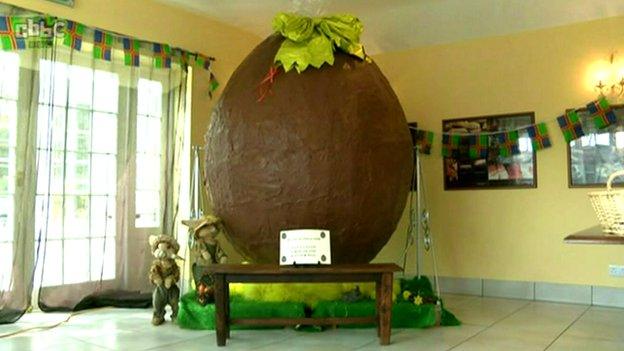Have scientists designed the 'perfect' chocolate?
- Published
- comments

Scientists set out to create the perfect chocolate experience with the help of a 3D printer
What would you say is the perfect type of chocolate? Is it milk, dark or white? Is the texture soft and gooey, or does it need to have a good snap?
Scientists from the University of Amsterdam have been thinking about what makes chocolate so enjoyable - not only the taste, but also the texture and sound of the popular sweet.
The team set out to design the perfect piece of chocolate by using a pretty unusual tool - a 3D printer!
Have your say on the qualities that make a perfect chocolate in our vote below and read on to find out more about the experiment...
If you cannot see the quiz, click here.
The experiment
Chocolate can be quite tricky to work with as changing its temperature can affect it's properties. This can impact how it feels and even its appearance.
To get around this problem, the scientists first had to get the chocolate to a desirable state.
This was done by heating it up, and then letting the chocolate cool while also adding in some cold chocolate.
Once the team got their chocolate under control, they put it in a 3D printer which allowed them to print different shapes while making sure the properties of the delicious material they were working with remained the same.
The researchers wanted to test how different shaped chocolate would break when bitten and how this changes the experience for the person eating it.
What did the scientists find?

Chocolates with more spirals were found to have the most cracks when bitten into
The scientists started off with a simple S shape.
It's been found that most people enjoy food cracking while eating, so the researchers concluded that the more 'snaps' that could be achieved when a person bites into a piece of chocolate, the better it would be.
The team were able to try out different chocolate shapes and they were on the hunt for one which would allow them to control the number of snaps in the sweet material.
So what was the outcome? Well, it turned out that spiral-shaped chocolates have more 'snap'.

What makes chocolate so enjoyable?
The researchers found that the number of spirals directly affected the number of snaps, and when it was tested out on a panel of people, the participants could tell the difference between chocolates that had more snaps compared to those which had less.
Also, sound recordings showed the noise the chocolates made when being bitten matched with the number of snaps, and this also added to the overall eating experience.
Following their experiment, the researchers were left with one big question - is how enjoyable something is to eat purely down to chance, or can it be designed?
They concluded that with the right mathematical model, chocolate can be shaped in a way that provides a better experience for the people eating it!
What do you think? Do you like chocolate with more snap? Don't forget to vote and let us know in the comments!
- Published15 November 2023

- Published29 March 2015

- Published13 April 2022

